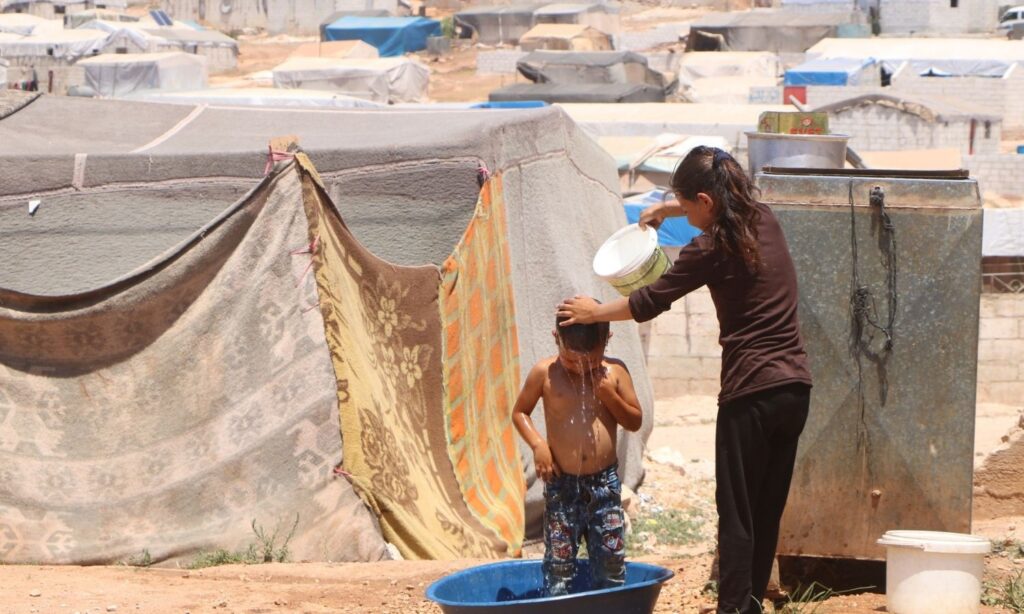The water shortage crisis weighs heavily on the displaced in the camps of northern Syria with the advent of each summer, amid the severe heat and the requirements of hygiene and public health, as this problem worries the relevant parties concerned with the living conditions of the displaced Syrians.
The displaced people in the camps suffer from a lack of clean water and sanitation networks, which threatens the lives of many of them with infectious diseases, especially with the outbreak of the Covid-19 pandemic in the region.
Enab Baladi toured Haq al-Sham camp in the northern countryside of Aleppo within the “What is your problem” program and surveyed the camp residents’ opinions about the water shortage problem.
Some camp residents mentioned that water only arrives once every four or five days and in small quantities that are only sufficient for two or three families, and 1,000 liters are distributed to several families.
Ongoing crisis
The bitter time that the residents of Haq al-Sham camp are going through, waiting to get enough water during a hot day, extends to the rest of the camps for the displaced in the countryside of Aleppo and northern Syria.
The local relief team, the Syrian Response Coordination Group (SRCG), says that a large percentage of the camps suffer from the difficulty of securing their daily needs of water with the increasing pressures on the displaced people, increasing fears of the expansion of fires inside camps, and the possibility of an increase in skin diseases, as a result of the use of polluted water, and the lack of sewage services.
According to a report published by the SRCG on 26 May, the informal camps that face difficulty in providing water constitute 85 percent of the total camps that suffer from this problem.
The number of camps deprived of access to clean and sterilized water reached 590, amid the possibility of an increase in numbers if water projects stop in new camps.
Jumaa al-Hassoun, a member of the administration of Haq al-Sham camp, told Enab Baladi that “the number of families is very large, and the amount of water is 1,000 liters for four families, and this quantity was sufficient during the winter season, and with the summer there is a severe shortage of water.”
To address this problem, al-Hassoun said that the camp administration is currently trying to communicate with the administration of the local council in the town of Qabasin, to which the camp is administratively affiliated, “in order to communicate with the relief organizations to support the camp with sufficient quantities of water.”
The challenge is to provide clean, usable water or the financial ability to obtain it.
According to a report published by UNICEF on 16 May, the displaced people in the camps of northern Syria are frequently exposed to dangers and threats to public health when their health networks, water resource systems, and infrastructure are left without any response and urgent repair.
World Bank data indicate that losses in the water sector are the highest in Syria in general, reaching 121 million US dollars, and the armed conflict has led to the death and refuge of many workers in the water and sanitation sector, and about two-thirds of the Syrians are getting water from sources of varying degrees of danger, between medium and high, while the rate of water availability in Syria decreased from 75 liters per person per day to 25 liters.
Thus, Syria is facing a real water crisis, and the warring parties should become more alert to the risks that could threaten the Syrian regions due to the decline in the quantity and quality of water resources.

